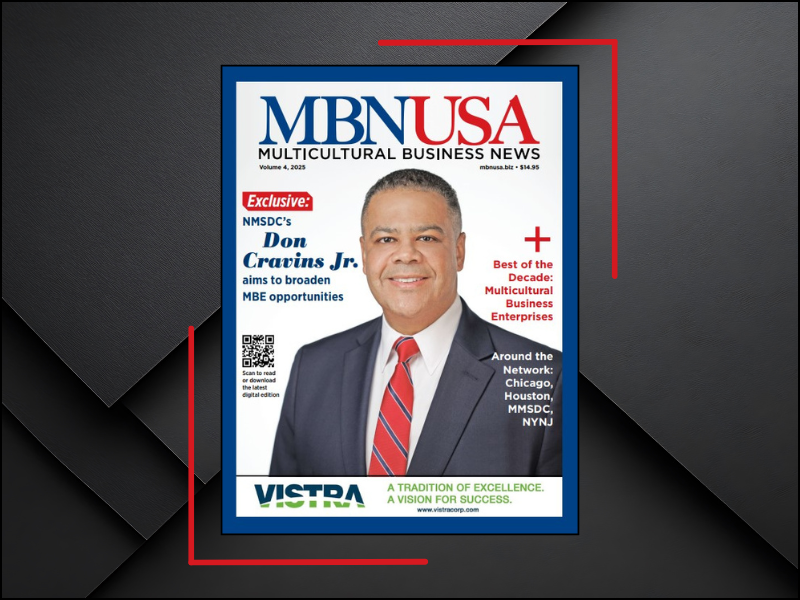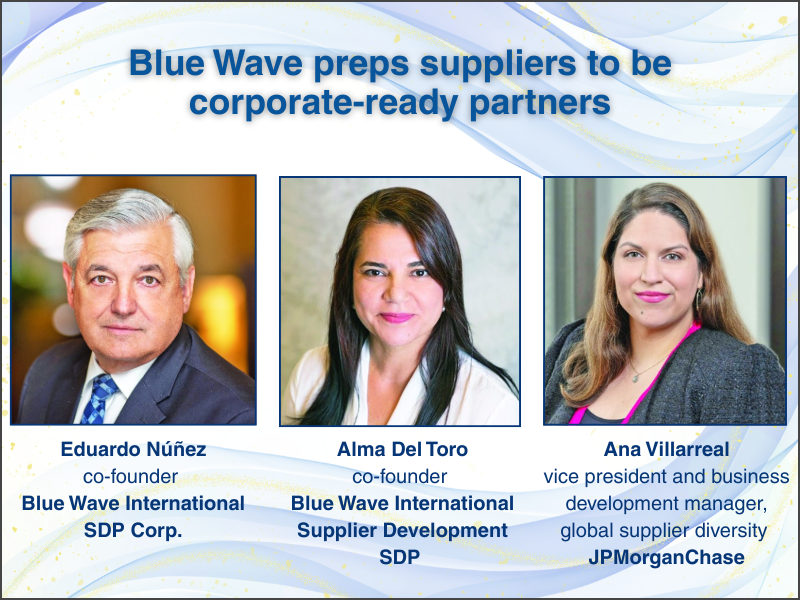Heather Herndon-Wright: Supplier diversity gives the company a competitive advantage
Q: Heather, can you tell us a little about your background?
A: I graduated with a Bachelor of Administration in government/politics from the University of Texas at Dallas, with an emphasis on constitutional Law. I have been blessed to work in the public, not-for-profit and for-profit sectors as well as have my own business as a certified WBE [woman business enterprise] where I executive produced the Eagle Award-winning documentary, “BUSINESS: America’s Game — Where are the Women?” and the book, “The Seeds of Success.” I have been married for 26 years to my wonderful husband, Randolph, and have a blended family with three children, five grandchildren, a grand dog and two great-grand cats.
Q: How long have you been involved in supplier diversity and as director of supply chain diversity and sustainability?
A: I have been a supply chain diversity professional for 34 years, obtaining my master compliance administrator certification for the public sector. I am also a certified professional in supply management and a certified professional in supplier diversity. In addition, I took on supply chain sustainability in 2020, where Vistra was recently recognized by the Sustainable Supply Chain Alliance with the Engagement Award.
Q: Why is supplier diversity inclusion and business diversity important to Vistra?
A: Vistra has had a Supply Chain Diversity Initiative for 34 years, and it is part of our corporate objectives and annual incentive pay — it is a part of our business strategy. Not only does it lead to cost savings and avoidance, but it contributes to the innovation that sets us apart and provides a competitive advantage in the marketplace.
Q: What supplier diversity initiatives are most successful for Vistra?
A: Vistra has many internal initiatives including a robust pre-qualification process, growth & capacity building, multi-tier, gamification and Nexus Awards. These ongoing strategies enable us to introduce new suppliers, grow existing suppliers and provide relevant data internally and externally to encourage friendly competition and provide recognition for both Vistra employee efforts and supplier performance.
Q: Do you have any examples of how a diverse supplier has grown with Vistra?
A: We have had several suppliers participate on our Growth & Capacity Building Initiative where we work with them to formally identify additional business opportunities within Vistra, where we can move them across the business to other sites or to add more products/services. We also work with them to facilitate introductions to our prime suppliers for Tier II opportunities, our peers in the energy industry and then, finally, outside the industry, to help increase their sustainability and resilience as a supplier while growing their capacity.
Q: What are some of the biggest challenges facing the continued growth of supply chain inclusion and business diversity?
A: The most immediate answer is the legal landscape, but I believe this is another cycle and it will pass. However, it will weed out the programs that are in place strictly for appearance or for compliance only versus those business initiatives that have been developed over the years to bring true business value.
Q: What are a few of the best practices you would recommend to fellow supplier diversity professionals?
A: Build relationships and your own personal brand at all levels of the business. As supply chain diversity professionals, we don’t actually buy anything — influential leadership is the most important competency we can bring to the position. It is imperative to have top-down support, especially in the early stages of a supply chain diversity initiative until diverse suppliers have had a chance to get in and prove their performance.
It is also important to have solid relationships and credibility within supply chain to build the effort from the bottom up — boots on the ground. It’s what I call the “thick middle” that is the most challenging and requires the most time and talent. These are the actual budget owners and decision-makers, so they have the most influence on meeting your diversity objectives. Educating and engaging the thick middle is where the magic happens!
Q: Based on your experience in the supplier diversity arena, where do you see supplier diversity inclusion in supply chains of the future?
A: I recently heard someone say, “Diversity is inevitable; inclusion has to be Intentional; and equity is expensive!” Resources, both human and financial, always have been and remain critical to a successful supply chain diversity initiative. As supply chain diversity professionals, our ability to bring the right supplier at the right time with the best value, is how we will be successful. We have to have the business acumen in whatever industry/supply chain we are supporting, to be the go-to subject matter expert, who just happens to intentionally focus on facilitating relationship building opportunities for diverse suppliers before a need arises. Talent is important but timing is everything. We have to be ready when the opportunities are and ensuring the decision-makers know the key diverse suppliers before they are needed is crucial.
Q: What advice would you give to diverse suppliers wanting to do business with Vistra and other utility organizations?
A: Understand our specific business and the industry needs — current and future — and then, focus on your sweet spot. Empower us with as much information on your capabilities and past performance as possible so that we can build a compelling story to the budget owner of the business solution (NOT product or service!) you provide. This enables us to go beyond being a gate keeper or referral service to being a true advocate for you and your business.
To learn more about vistra, visit Vistracorp.com.





